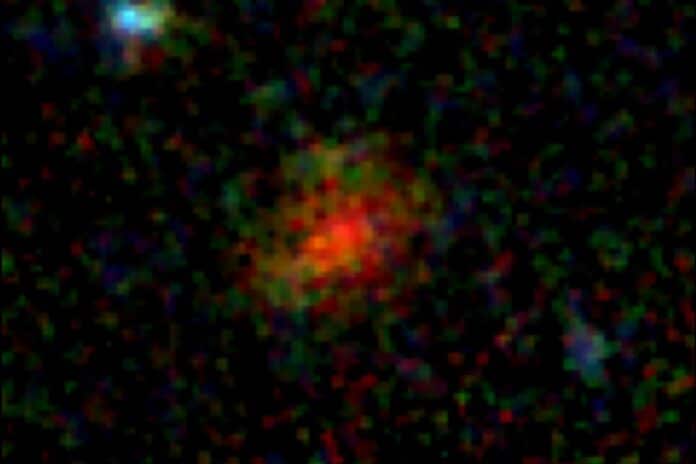When seen through the ground-based telescope, a ghostly object appears as a glowing blob. But, when seen through the Hubble Space Telescope, it vanished altogether.
Here, the James Webb Space Telescope comes into play: the ghostly object has reappeared as a faint yet distinct galaxy.
The object AzTECC71 has been identified by the COSMOS-Web collaboration as a dusty star-forming galaxy. Alternatively, a galaxy formed about a billion years after the Big Bang is busily producing many young stars, but it is hidden under a thick layer of dust. This discovery, along with over a dozen other candidates in the first half of COSMOS-Web data that have not yet been described in the scientific literature, suggests that these galaxies, which were previously thought to be extremely rare in the early universe, maybe three to ten times more common than expected.
Jed McKinney, a postdoctoral researcher at The University of Texas at Austin, said, “This thing is a real monster. Even though it looks like a little blob, it’s forming hundreds of new stars yearly. And even something that extreme is barely visible in the most sensitive imaging from our newest telescope, which is so exciting to me. It’s potentially telling us a whole population of galaxies has been hiding from us.”
Confirmation of the conclusion might indicate that the early universe was far dustier than previously believed.
Initially identified as an indistinct blob of dust emission by the James Clerk Maxwell Telescope in Hawaii, operating in the far infrared to microwave wavelengths, the galaxy AzTECC71 gained clarity in data from the ALMA telescope in Chile, renowned for superior spatial resolution and infrared capabilities. Further confirmation came from JWST data at 4.44 microns, revealing a faint galaxy precisely at the identified location while remaining invisible in shorter wavelengths below 2.7 microns.

Now, the team is working to uncover more of these faint galaxies from the Webb.
McKinney said, “With JWST, we can study for the first time the optical and infrared properties of this heavily dust-obscured, hidden population of galaxies because it’s so sensitive that not only can it stare back into the farthest reaches of the universe, but it can also pierce the thickest of dusty veils.”
According to the team’s calculations, the galaxy is thought to be visible at a redshift of roughly 6, or approximately 900 million years after the Big Bang.
About COSMOS-Web project:
The COSMOS-Web project aims to map up to 1 million galaxies from a part of the sky the size of three full moons. One objective is to investigate the universe’s earliest structures. A team of over 50 researchers secured 250 hours of observation on the James Webb Space Telescope in its inaugural year. They obtained initial data in December 2022, anticipating additional information until January 2024.
